nn
n The something else that Lin Zexu did wasnunprecedented – he wrote a letter directly to the King of England (who wasnactually a woman, Queen Victoria, but he wasn’t to know that). It’s anremarkable document, written in the traditional ‘memorial’ form, that mixesnhighly formalised Confucian language with direct appeals to the monarch’snhumanity and a straightforward account of the facts of the opium traffic.
n
n
n
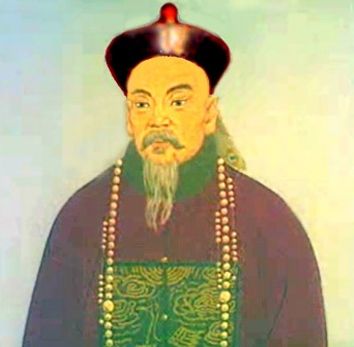 |
| Lin Zexu |
n
n
n
nLinndrafted and revised his letter, then had English-speaking merchants andnmissionaries translate it into English, circulated it amongst the Westernnmerchants in Canton as a public announcement, and sent a copy off to London. Asnit happened, Queen Victoria did not receive Lin’s letter, as it was interceptednby her ministers, which may be just as well, considering one of the threats itncontained. If the British ruler did not intervene and stop the import of opiumninto China, said Lin, then the Chinese Emperor would stop the export of goodsnto Britain.
n
n
n
n“Has China (we should like to ask) ever yet sent forth a noxiousnarticle from its soil? Not to speak of our tea and rhubarb, things which yournforeign countries could not exist a single day without, if we of the CentralnLand were to grudge you what is beneficial, and not to compassionate yournwants, then wherewithal could you foreigners manage to exist?”n
n
n
nThat’snright, you’ve read that correctly. Stop sending us your nasty opium or else wenwill stop sending you our rhubarb, and you’ll all be dead within a day.nCommissioner Lin certainly knew his stuff. The corrupt western devils were allnconstipated and needed the vital rhubarb to maintain their regular lavatorialnhabits. Without it, their Empire would collapse, as the population succumbed tonthe horrors of bunged-up botties.
n
n
n
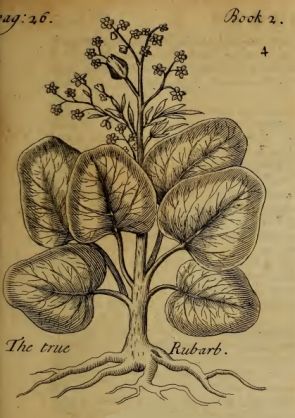 |
| Pierre Pomet – Rhubarb – in The Compleat History of Druggs – 1737 |
n
n
n
nThe British simply had to have rhubarb or thenconsequences would be too terrible to contemplate – ohh, the straining, thengriping and the moaning. Send us your rhubarb, Commissioner Lin, by all that’snholy, send us your rhubarb, man.
n
n
n
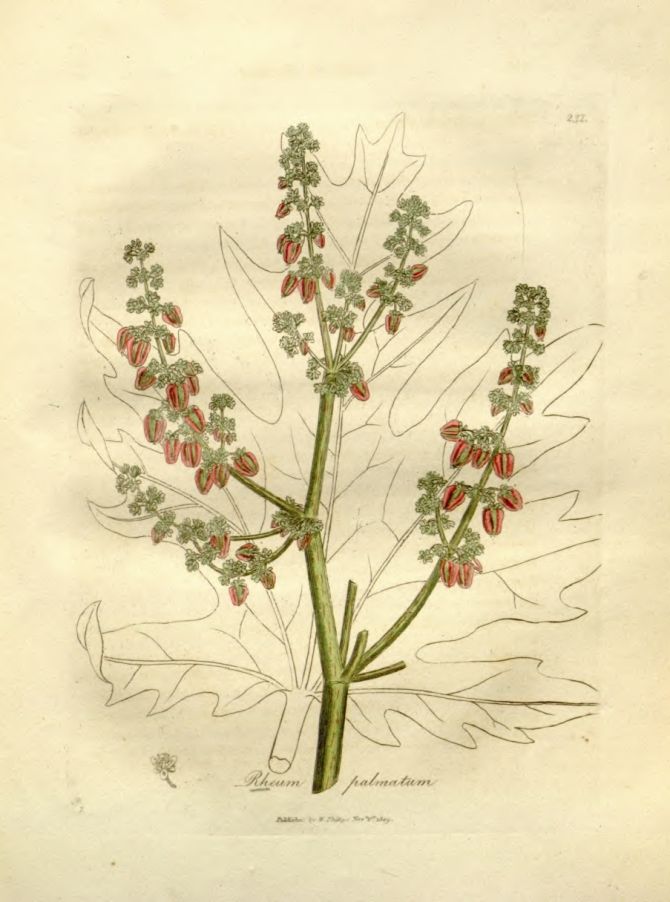 |
| W J Hooker – Rhubarb – in Medical Botany Vol 4 – 1832 |
n
n
n
nThe name rhubarb comes from the Greek, ΄Ρān– Rha – the ancient name of the River Volga, and the medical Latin barbarumn– ‘foreign’, referring to fact that in the ancient world, rhubarb came from thenforeign lands around the Volga.
n
n
n
n
n
 |
| Petri Andrea – Dioscorides – Rhubarb – in De Materia Medica – 1565 |
n
n
n
nDioscorides, the ancient Greek physician andnbotanist, wrote about rhubarb in his De Materia Medica, a first centurynpharmacopoeia that was widely used in Europe for over fifteen hundred years (itnwas one of the few works from antiquity that was not ‘rediscovered’ during thenRenaissance, as it was never lost).
n
n
n
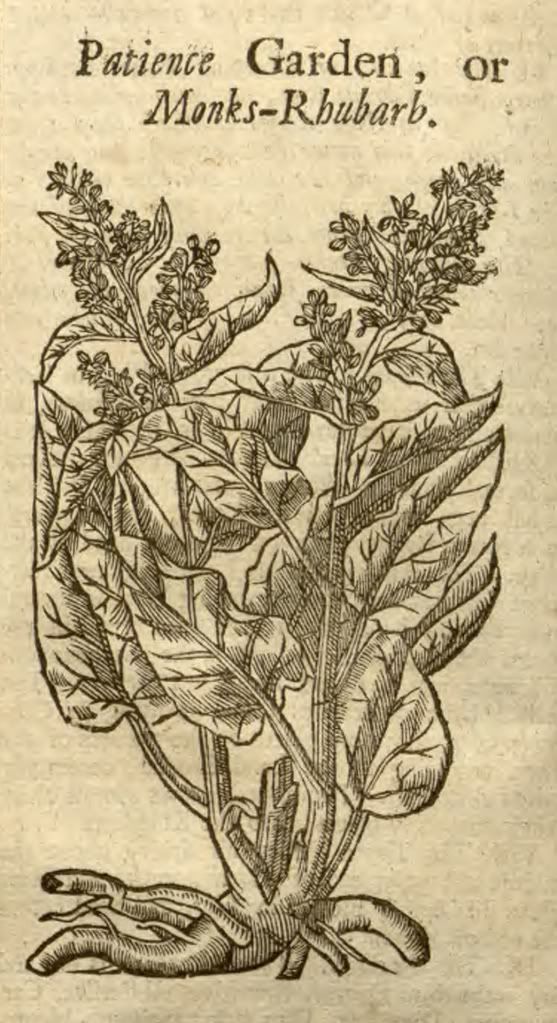 |
| William Salmon – Rhubarb – in Botanologica – 1710 |
n
n
n
nThe early explorers who travelled in theneast and to China, including Marco Polo, all make a point of mentioning rhubarbnamong the marvels and the treasures that they have discovered; one un-authorednwork titled Accounts of Independent Tatary [sic] (1558) records
n
n
n
n“Formerlynkarawans came from Kathay when the way was open. They were nine months on thenjourney, and brought mufk, rhubarb, fatin, damafk, and other goods”.n
n
n
nRhubarb root features in the early herbals, John Gerarde writes,
n
n
n
n“It isnbrought out of the countrie of Sina (commonly called China), which is towardenthe east in the upper part of India … it groweth on the sides of the river Rhan… as also on the banckes of the river Rha, now called Volga.”n
n
n
n
n
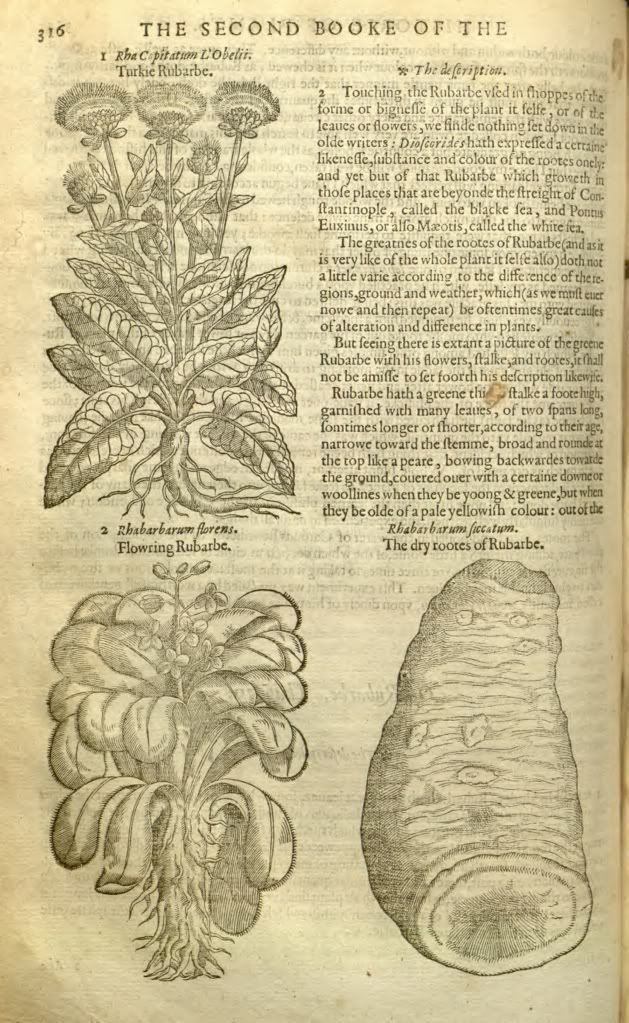 |
| John Gerarde – Rhubarb – in The Herball – 1597 |
n
n
n
nTo thenherbalists, there were two rhubarbs – one from Asia, generally called Chinanrhubarb, and another from a vague area in Asia Minor named Pontus,nwhich may have been Black Sea, called Turkey (or Turkie) rhubarbnbecause it was traded through Turkish merchants. This latter was also called PonticnRoot and was an ingredient listed by Celsus in his recipe for Mithradates’snAntidote, a marvellous medicine said to be even more effective than VeniceTreacle.
n
n
n
 |
| Celsus – recipe for Mithradates’s Antidote – in Of Medicine – 1765 |
n
n
n
nIt is important to note that the root of the rhubarb was the medicinalnpart of the plant – the stalks (or petioles) that are eaten today werendiscarded as unwanted foliage. Men dressed as Turks (or ‘Hindoos’) usednto sell rhubarb root on the streets of London, to be used as a medicine, and innthe early 1800s, a market gardener called Myatt thought that he could grow his ownnrhubarb and sell it cheaper than the ‘Turkish’ merchants but he found that hisnroots had no medicinal properties.
n
n
n
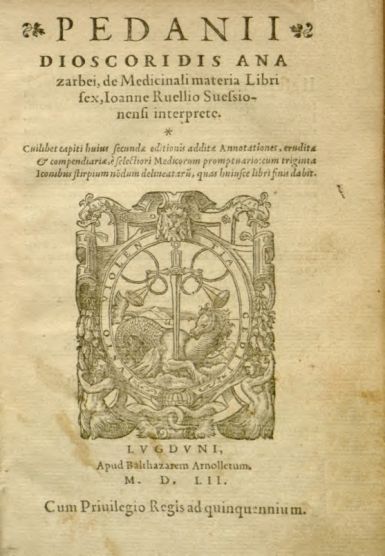 |
| Dioscorides – De Materia Medica – 1552 |
n
n
n
nIt is said that one day he happened to chewnone of the young shoots and found it succulent and quite tasty. He made somentarts with the rhubarb shoots, sweetened with sugar, and was pleased with thenresults, but he found it very difficult to sell the stalks at Covent Gardennmarket. He persevered and eventually rhubarb became a popular filling for piesnand tarts – a correspondent to Notes and Queries wrote that rhubarb piesnwere a popular novelty at a girls’ boarding school at Hackney during the 1820snand 1830s. However, in the History of Esculent Plants, published inn1783, Charles Bryant writes of rhubarb,
n
n
n
n“The footftalks of the radical leavesnhaving an acid tafte, and being thick and flefhy, are frequently ufed in thenfpring for making of tarts. If they be carefully peeled they will bake veryntender, and eat agreeably. Many people prefer them even to Apples.”n
n
n
nAnotherncorrespondent recalled a conversation with the widow of Conrad Loddiges, authornof the Botanical Cabinet, who told him that the Loddiges family were thenfirst to introduce rhubarb growing to England, although it may be that she isnreferring to culinary rhubarb, as medicinal rhubarb is written about by JohnnParkinson in his 1629 herbarium Paradisi in Sole Paradisus Terrestris,
n
n
n
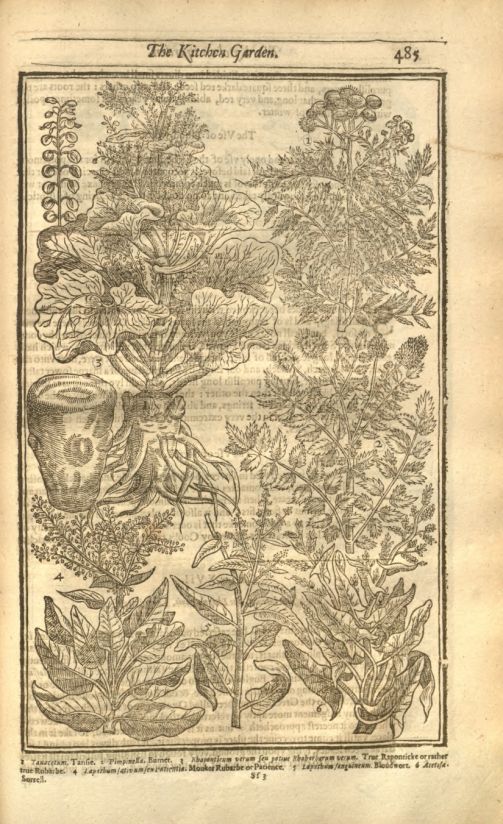 |
| John Parkinson – Rhubarb (bottom left) – Paradisi in Sole Paradisus Terrestris – 1629 |
n
n
n
n
n
n“…nbut I haue a kinde of round leafed Dock growing in my Garden, which was fent menfrom beyond Sea by a worthy Gentleman Mr Dr Matth Lifter, One of the Kings Phyfitians,nwith this title, Rhaponticum verum, and firft grew with me, before itnwas euer feen or known elfewhere in England by proof I haue found to be fo likenvnto the true Rubarbe,or the Rha of Pontus, both for forme and colour, that Indare fay it is the very true Rubarbe.”n
n
n
n
n
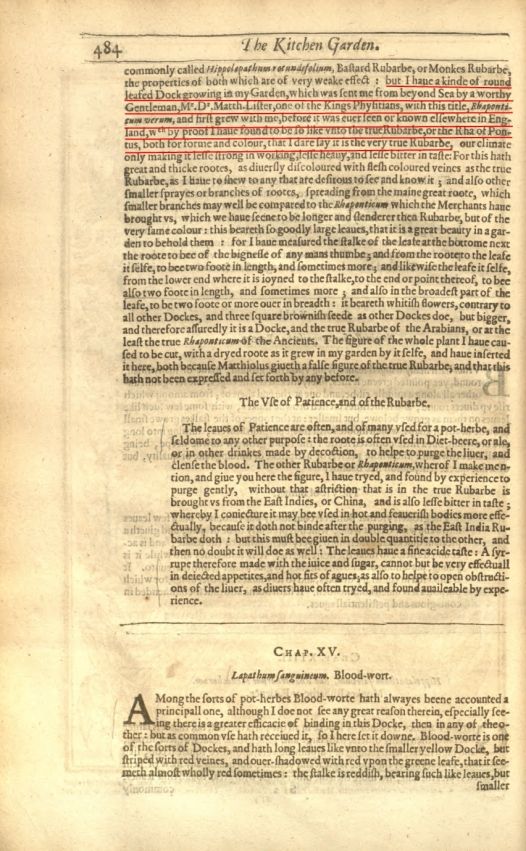 |
| John Parkinson – Paradisi in Sole Paradisus Terrestris – 1629 |
n
n
n
nBut even that may not be the firstnrhubarb, in spite of what Parkinson claims, as the eccentric physician AndrewnBoorde added a postscript to a letter to Thomas Cromwell of 1534, in which hensays,
n
n
n
n“I haue sentt to your Mastershepp the seeds of reuberbe the which camenowtt off Barbary. In thos partes ytt ys had for a grett tresure. The seeds bensowne in March thyn, and when they be rootyd they must be takyn vpp and settneuery one off them a foote or more from another, and well watred, &c.”n
n
n
nUnfortunately, we neither know if Cromwell actually planted the seeds nor ifnthey grew if he did plant them, but it’s a tantalising thought that rhubarb wasngrown here almost five hundred years ago. Rhubarb was widely grown, and eaten,nlatterly in England as it is very easy to cultivate and produces its fruitnearly in the year (my own rhubarb plant has already started to sprout, at thenbeginning of March) but it fell out of favour during and after CorporalnHitler’s Unpleasantness, when sugar rationing made sweetening rhubarb a lessernpriority for most people.
n
n
n
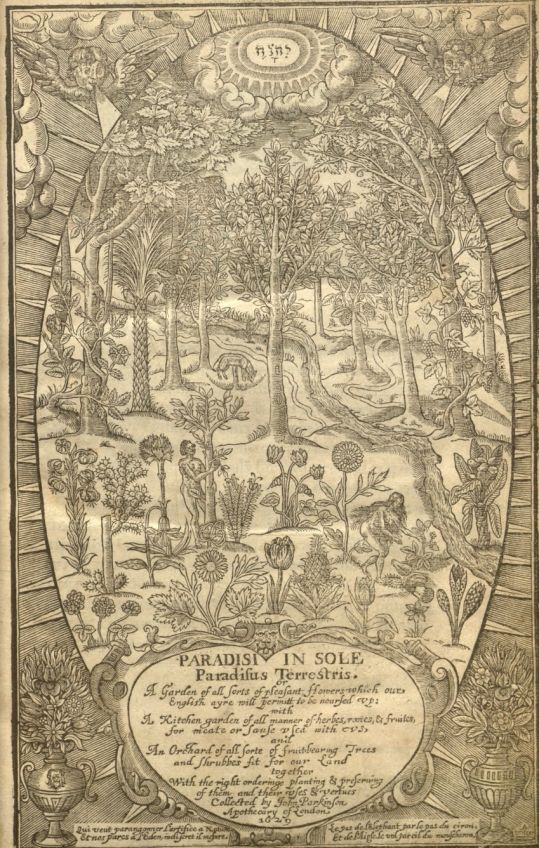 |
| John Parkinson – Paradisi in Sole Paradisus Terrestris – 1629 |
n
n
n
nMost gardeners would have had plants however and,nfrankly, with little else available people got sick of eating the stuff. Whennrationing ended, and when more exotic fruits began to be imported again, thenlowly rhubarb fell from favour although, in recent years, the renewed interestnin old-fashioned ingredients has meant that rhubarb is enjoying something of ancome-back. It is a very versatile foodstuff and works well with such things asnoily fish (mackerel and rhubarb is marvellous) although to my mind rhubarb andnginger crumble with custard is a food fit for the Gods.
n
n
n
 |
| George Chambers – The Tourist’s Pocket-Book – 1904 |
n
n
n
nA very handy Tourist’snPocketbook by George Chambers (1904) has a list of useful medical suppliesnthat any self-reliant Edwardian traveller should have about them when visitingnforeign parts, amongst which are chlorodyne (a mixture of laudanum, chloroformnand cannabis), quinine, chloroform and rhubarb pills (well, you never know, donyou?).
nnn
n
n
n
n
nnn




















